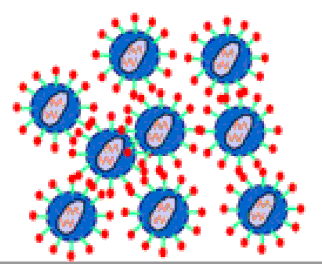Papers in the Biological Sciences

Qingsheng Li Publications
Document Type
Article
Date of this Version
2014
Citation
ABDULHAQQ ET AL. , JOURNAL OF ACQUIRED IMMUNE DEFICIENCY SYNDROMES 65 (2014)
Abstract
Objective: Intravaginal exposure to simian immunodeficiency virus (SIV) acutely recruits interferon-alpha (IFN-α) producing plasmacytoid dendritic cells (pDC) and CD4+ T-lymphocyte tar-gets to the endocervix of nonhuman primates. We tested the impact of repeated cervicovaginal ex-posures to noninfectious, defective SIV particles over 72 hours on a subsequent cervicovaginal challenge with replication competent SIV. Methods: Thirty-four female Indian Rhesus macaques were given a 3-day twice-daily vaginal exposures to either SIVsmB7, a replication deficient derivative of SIVsmH3 produced by a T lymphoblast CEMx174 cell clone (n = 16), or to CEM supernatant controls (n = 18). On the fourth day, animals were either euthanized to assess cervicovaginal immune cell infiltration or intravaginally challenged with SIVmac251. Challenged animals were tracked for plasma viral load and CD4 counts and euthanized at 42 days after infection. Results: At the time of challenge, macaques exposed to SIVsmB7, had higher levels of cervical CD123 pDCs (P = 0.032) and CD4+ T cells (P = 0.036) than those exposed to CEM control. Vaginal tissues showed a significant increase in CD4+ T-cell infiltrates (P = 0.048) and a trend toward increased CD68+ cellular infiltrates. After challenge, 12 SIVsmB7-treated macaques showed 2.5-fold greater daily rate of CD4 decline (P = 0.0408), and viral load rise (P = 0.0036) as compared with 12 control animals. Conclusions: Repeated nonproductive exposure to viral particles within a short daily time frame did not protect against infection despite pDC recruitment, resulting instead in an accelerated CD4+ T-cell loss with an in-creased rate of viral replication.

